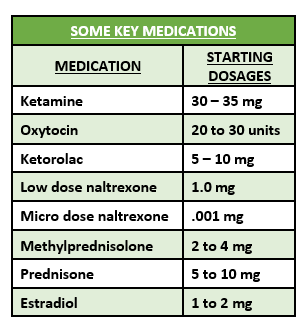Why Troches Make Medications More Effective
/By Dr. Forest Tennant, PNN Columnist
We regularly get emails from people who have gastrointestinal problems or tell us a particular medication is ineffective for them. Pills and other oral medications are not always the best way to treat Adhesive Arachnoiditis (AA) or its related diseases.
The problem is that the stomach, intestine and liver don’t assimilate and metabolize more than 30 to 50 percent of the swallowed oral dose. Oral medications may also cause gastric irritation or even bleeding, and the drug may require an hour or more to be effective. Persons with AA and Ehlers-Danlos Syndrome (EDS) may have gastrointestinal dysfunction, which can make some oral medications like opioids almost totally ineffective.
If you are experiencing gastrointestinal problems or believe some of your medications are ineffective, we suggest you try using troches (the Greek pronunciation is “tro-key”). Troches are essentially lozenges that contain medication. They are placed in the mouth between the tongue and cheek until the medication dissolves.
The ancient Egyptians made some of the first troches from honey, herbs and spices to treat sore throats. Medicines introduced into the body this way bypass the digestive system and deliver their active ingredients directly into the blood stream through blood vessels under the tongue and in the cheek.
Superior Traits of Troches
Troches are a superior way to administer many of the key medications and hormones required to treat AA, and its related problems of Tarlov cysts and EDS. Some of these medications, like ketamine and oxytocin, are essentially ineffective if swallowed.
More potent than swallowed medication
Fast acting – within 10 minutes
No direct gastrointestinal irritation
Can reduce reliance on opioids
Avoids injections and suppositories
A troche must be compounded by your local pharmacy. Every community today has pharmacies that will make or “compound” troches. For better pain relief and control of AA, Tarlov cysts and EDS, we highly recommend that patients and medical practitioners take the advanced step in therapeutics and begin to use troches.
Forest Tennant, MD, DrPH, is retired from clinical practice but continues his research on the treatment of intractable pain and arachnoiditis. This column is adapted from a bulletin recently issued by the Arachnoiditis Research and Education Project. Readers interested in subscribing to the bulletins should click here.
The Tennant Foundation gives financial support to Pain News Network and sponsors PNN’s Patient Resources section.




